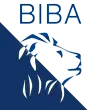Shortfall Gap Insurance for your Kia
What is Gap Insurance and why should you consider protecting your finances and buying Gap insurance for your Kia?
Gap Insurance is a very simple form of protection. In layman's terms, if your Kia is written off, your policy pays the difference between your motor insurance company's settlement figure and depending upon the level of cover you choose, either;
1. simply clears any finance outstanding on your lease or contract hire agreement,
2. tops your insurance companies settlement back up to the higher of either the invoice price you paid or the amount outstanding on a finance agreement tied to your Kia,
3. takes you back to the higher of the financial settlement, the invoice price you paid or the replacement cost of another Kia the same as yours was on the 1st day you collected it. If that model is no longer available then settlement is based on the superseding model.
We at Shortfall.co.uk strongly believe in assisting customers with their understanding of Gap Insurance. We use where ever possible simple, easy-to-read explanatory information and examples about how it works and how the various levels of protection perform.
We know that most of our customers first hear about Gap Insurance while at the Kia dealership. Our customers inform us that they were quoted anything in between £399 to as much as £1000. However, at Shortfall.co.uk, we give customers access to a range of policies for a fraction of the cost. All our policies are genuine, tried and tested, and backed by the financial compensation scheme.


